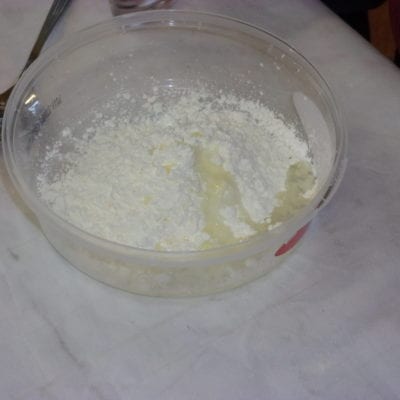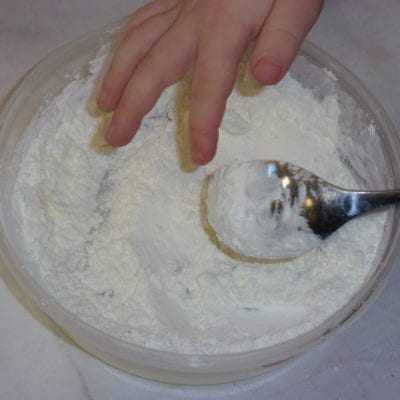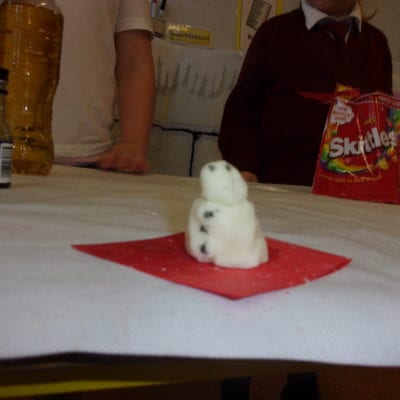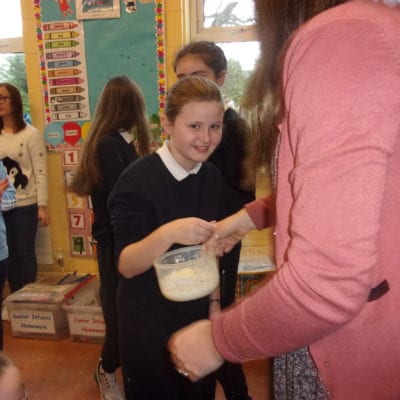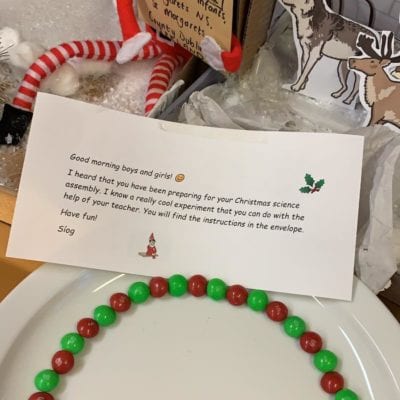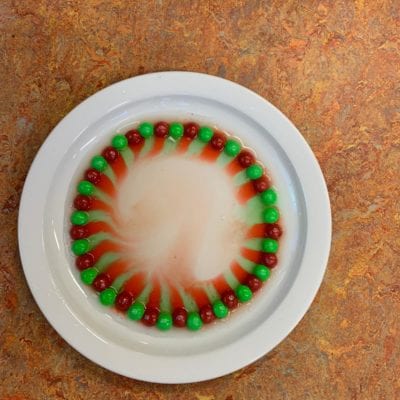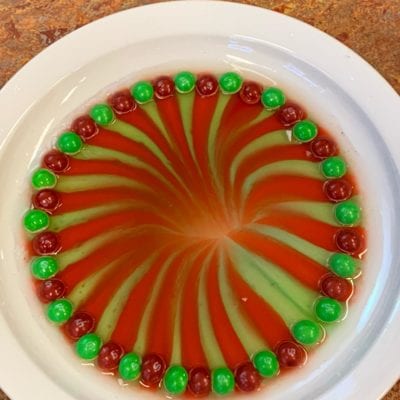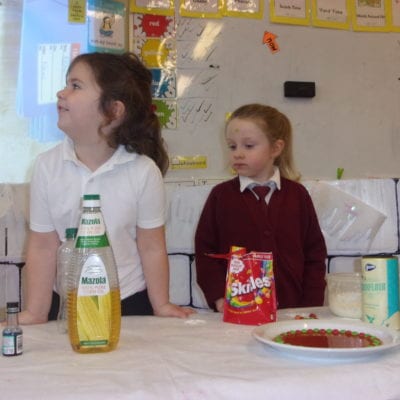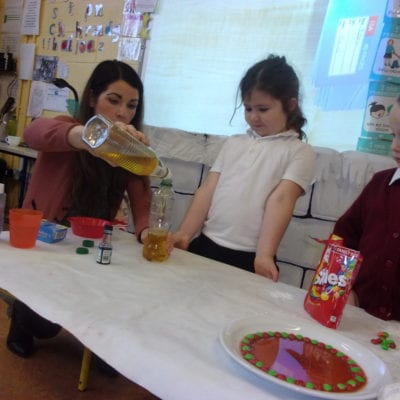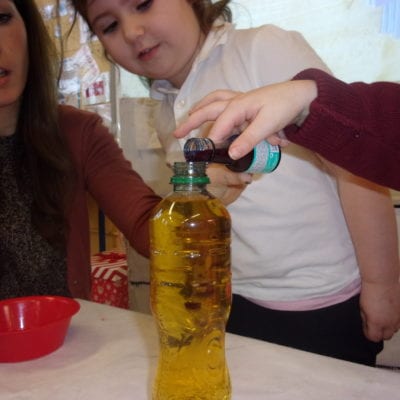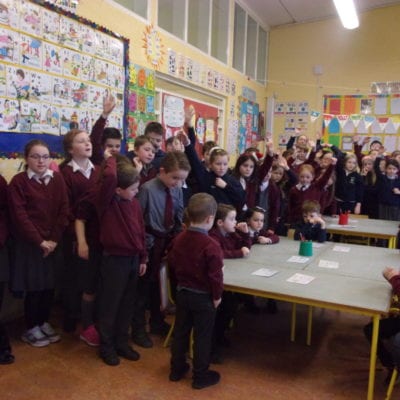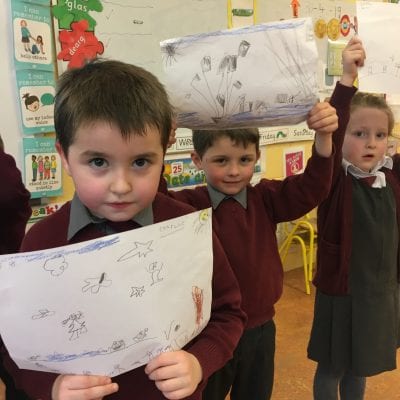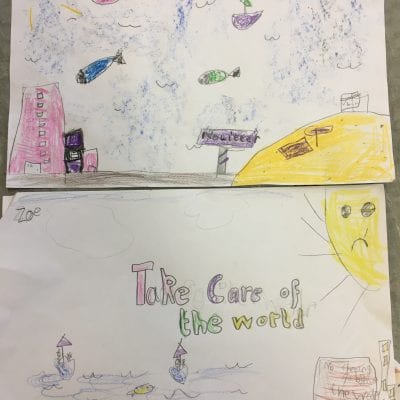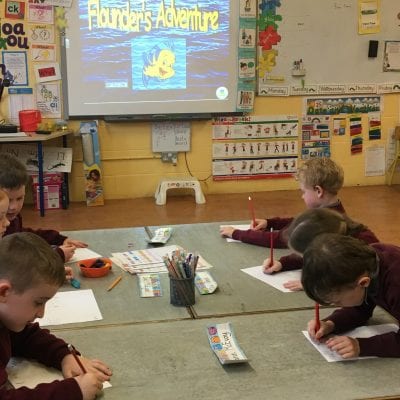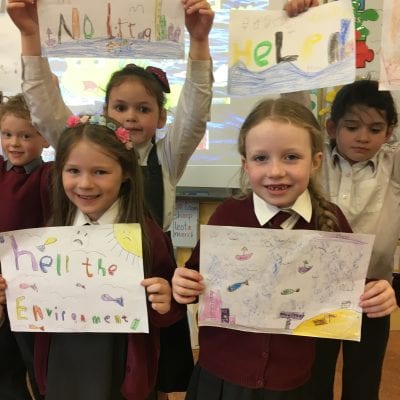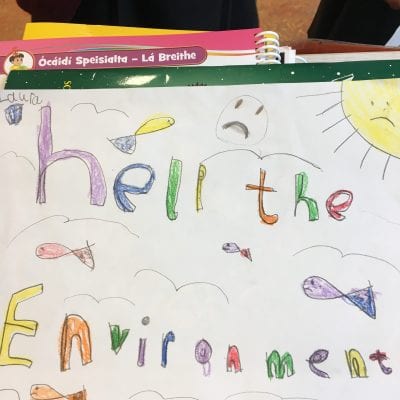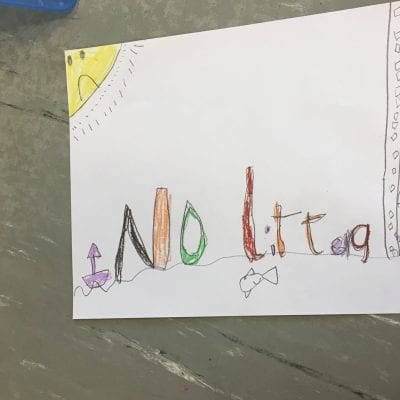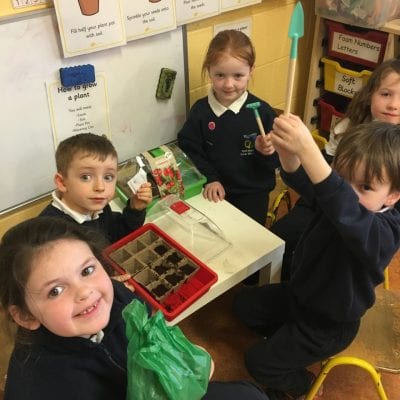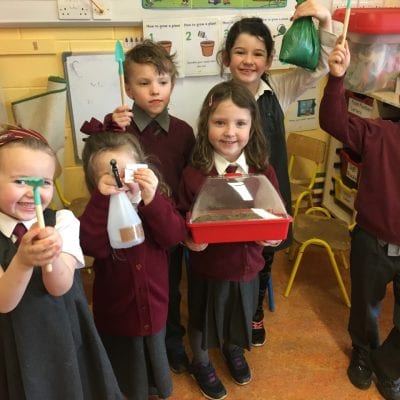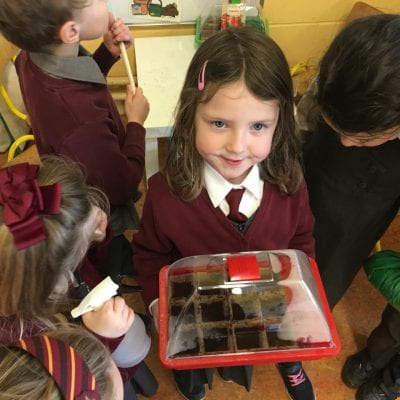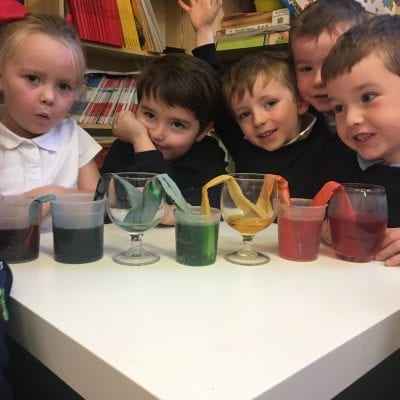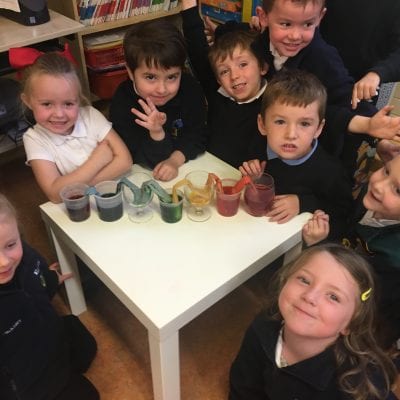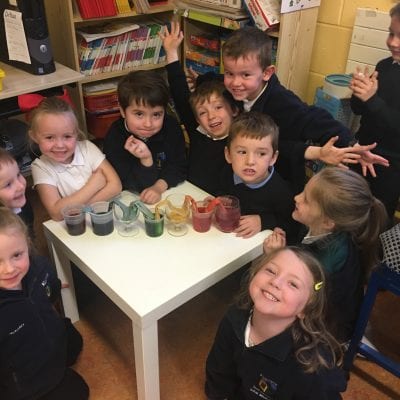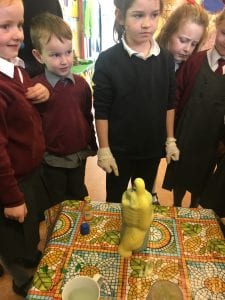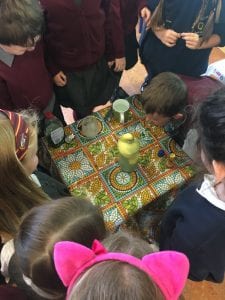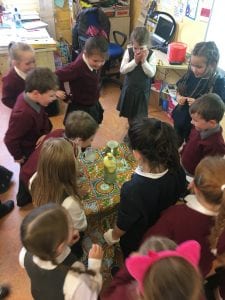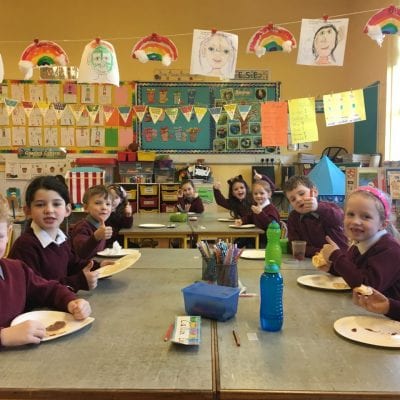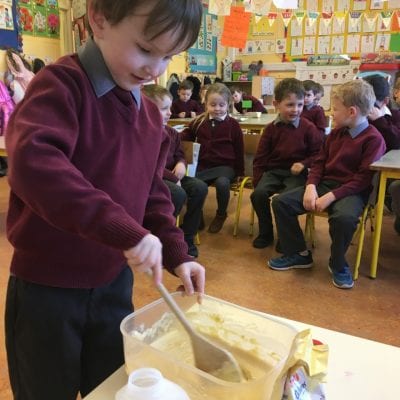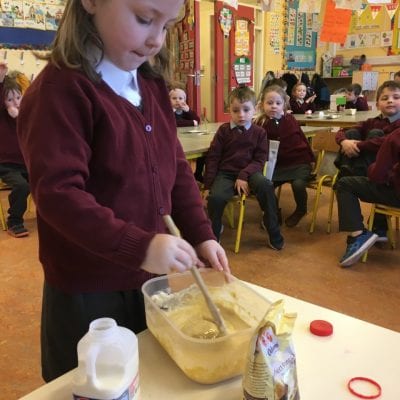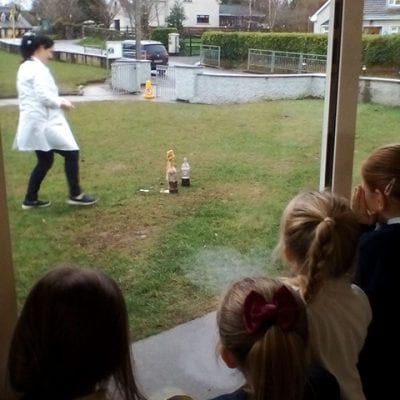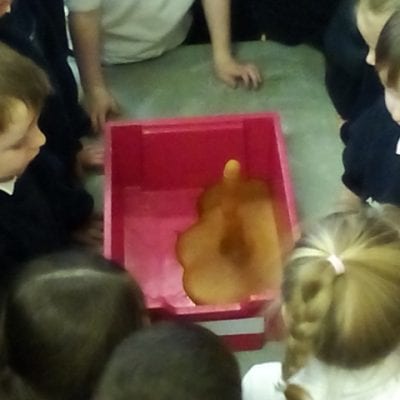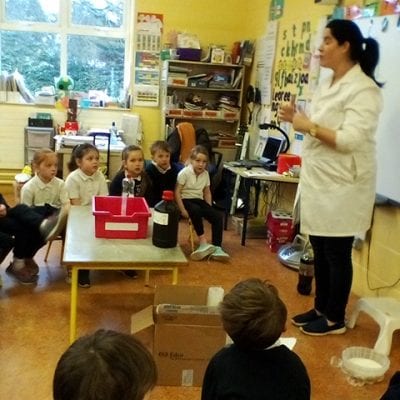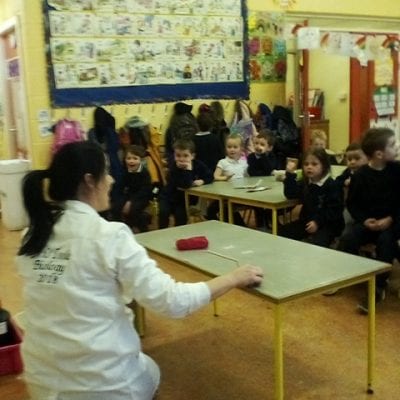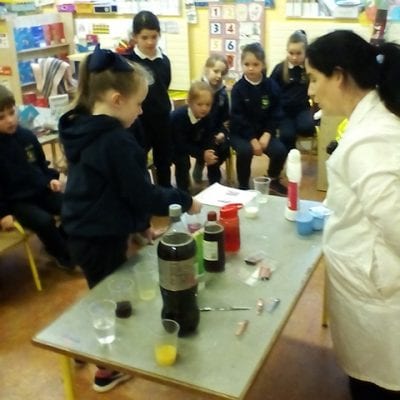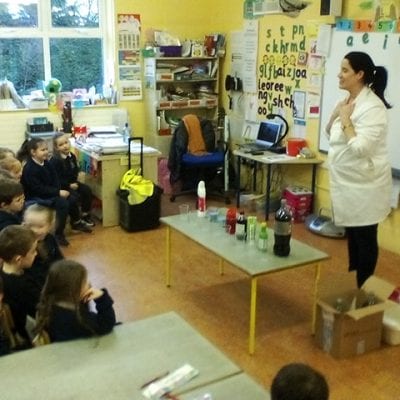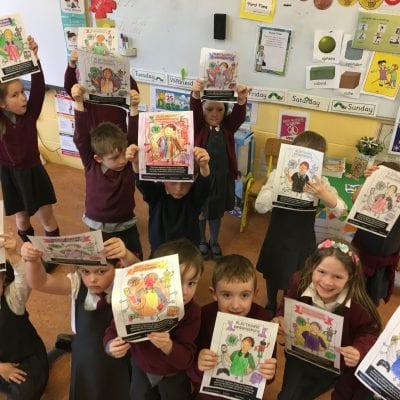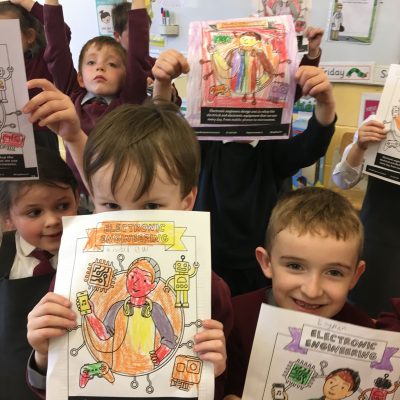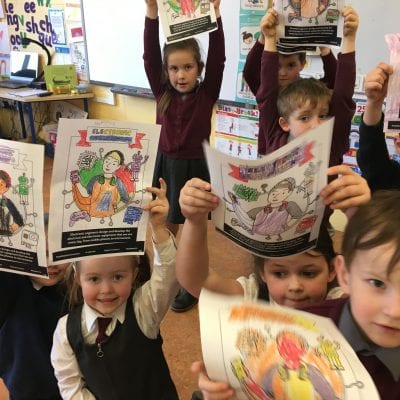Christmas Science Assembly
For our Christmas Science Assembly, Junior and Senior Infants presented three experiments.
Doughy Snow
First the children showed the rest of the school how to make snow using baby oil and corn flour. Once the mixture was made pupils were invited to touch the doughy snow and make a snowman.
Skittle Christmas Wreath
The children then went on to demonstrate the skittle experiment which was inspired by our classroom elf. It’s very simple to do an only involves a plate, red and green skittles and some warm water (handled by teacher).
Lava Lamps
For their final experiment the children revealed how to make a cool lava lamp. For this experiment you need a clear plastic bottle, food colouring, vegetable oil, water and alka-seltzer (handled by teacher).
Environmental Awareness and Care:
The children in Infants have been learning about the importance of caring for the environment. They have been learning lots about sea pollution. They listened to a story about Flounder the fish and his adventures in the ocean. They learned that Flounder and all the other sea creatures face many challenges due to pollution. They discussed the importance of putting rubbish in the bin when at the seaside and suggested that more signs and bins should be placed on beaches to remind people to take care of the environment. They also learned about sea pollution caused by oil tankers and boats and the important role we all play in ensuring the oceans are clean and safe for the creatures that live there.
Living Things: Growing strawberries and tomatoes
The children each planted their own strawberry and tomato seed. They have been learning about the important that role sunlight, water and soil play in helping the seeds to germinate and grow into healthy strawberry and tomato plants.
Materials and Change: Mixing the Primary Colours
Junior and Senior Infants enjoyed exploring what happens when you mix the primary colours (red, yellow and blue). We used six glasses of water, tissue and red, blue and yellow food dye to conduct our experiment. We put the red, blue and yellow food dye into three glasses of water and placed another three glasses of water between each of these primary colours. Some of the children rolled up kitchen towel and placed them in the glasses. We left the experiment to work its magic throughout the day and we observed the colour mixing and changes that took place. The children discovered that when you mix the primary colours together, they create the secondary colours (orange, green and purple).
Elephant Toothpaste: Junior and Senior Infants created elephant toothpaste for their science assembly.
We used the following….
- A clean 16 ounce plastic soda bottle
- 1/2 cup hydrogen peroxide liquid (Ms. South was in charge of this 🙂 )
- 1 Tablespoon (one packet) of dry yeast
- 3 Tablespoons of warm water
- Liquid dish washing soap
- Food coloring
- Small cup
- Safety goggles
What we did!
- Put on safety goggles while Ms. South carefully poured the hydrogen peroxide into the bottle.
- Add 8 drops of yellow food coloring into the bottle.
- Add about 1 tablespoon of liquid dish soap into the bottle and swish the bottle around a bit to mix it.
- In a separate small cup, combine the warm water and the yeast together and mix for about 30 seconds.
- Pour the yeast water mixture into the bottle (a funnel helps here) and watch the foaminess begin!
Pancake Tuesday!
For pancake Tuesday the children learned how to make the batter for pancakes using flour, eggs and milk. The end result was delicious!
A Real Scientist Visited Junior and Senior Infants
Dr. Martina McGuirk demonstrated some cool science experiments for the children in Ms. South’s class. The children learned all about acids and bases and they had the opportunity to test different liquids with litmus paper to decipher which were acids and which were bases. They discovered that water is the best drink for their teeth as it is not acidic. Dr. McGuirk also conducted a mentos and coke experiment, a balloon rocket experiment and they even got to make elephant toothpaste again. They truly are science whizzes now!
Electrical Engineers
The children have been learning all about the people who work in our community from the postman to the doctor and even engineers and scientists. We have learned two new big words this week and they are ‘technology’ and ‘engineer’. The children discovered that the technology they use every day such as ipads, phones and computers are designed and made by special engineers called electronic engineers.
